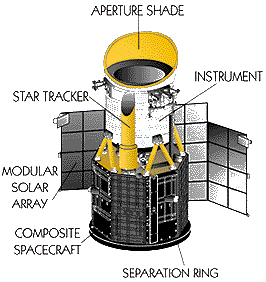|
||
| WIRE's infrared detectors are ideally
suited to producing a relatively unbiased sample of galaxies with supermassive black holes
at their cores, or Active Galactic Nuclei, over a wide range of lookback times. WIRE
will also be able to map out nearby galaxies in great detail, and map star-forming regions
within our own galaxy. The WIRE survey will also be sensitive to the detection of failed
stars, or brown dwarfs, which are nearly impossible to directly detect at visual
wavelengths. It may also carry evidence for the formation of solar systems around nearby
stars in the form of infrared emission from circumstellar debris disks. The WIRE Associate Investigator Program opens up a broader participation from the astronomical community to use WIRE to observe fields and sources near the Galactic and ecliptic planes, where WIRE's primary science observations are not possible. We anticipate that 10% of the survey time will be allocated to the most compelling Associate Investigator studies. This program will enhance the scientific return from the WIRE mission. |
The WIRE instrument consists of a 30-cm, solid-hydrogen cooled infrared telescope that images a 33 by 33-arcminute field-of-view onto two 128 by 128 format detectors at the focal plane. There are no moving parts in the telescope. The instrument will be the lightest high-performance spaceborne dewar system ever launched. A three-axis stabilized spacecraft bus will put WIRE into a Sun-synchronous, dawn-dusk orbit, completing 15 orbits per day. Observations of a science field from multiple orbits will have their background removed, flat-fielded, registered, and coadded on the ground to produce deep images of the faint mid-infrared sky. | |
|
||


